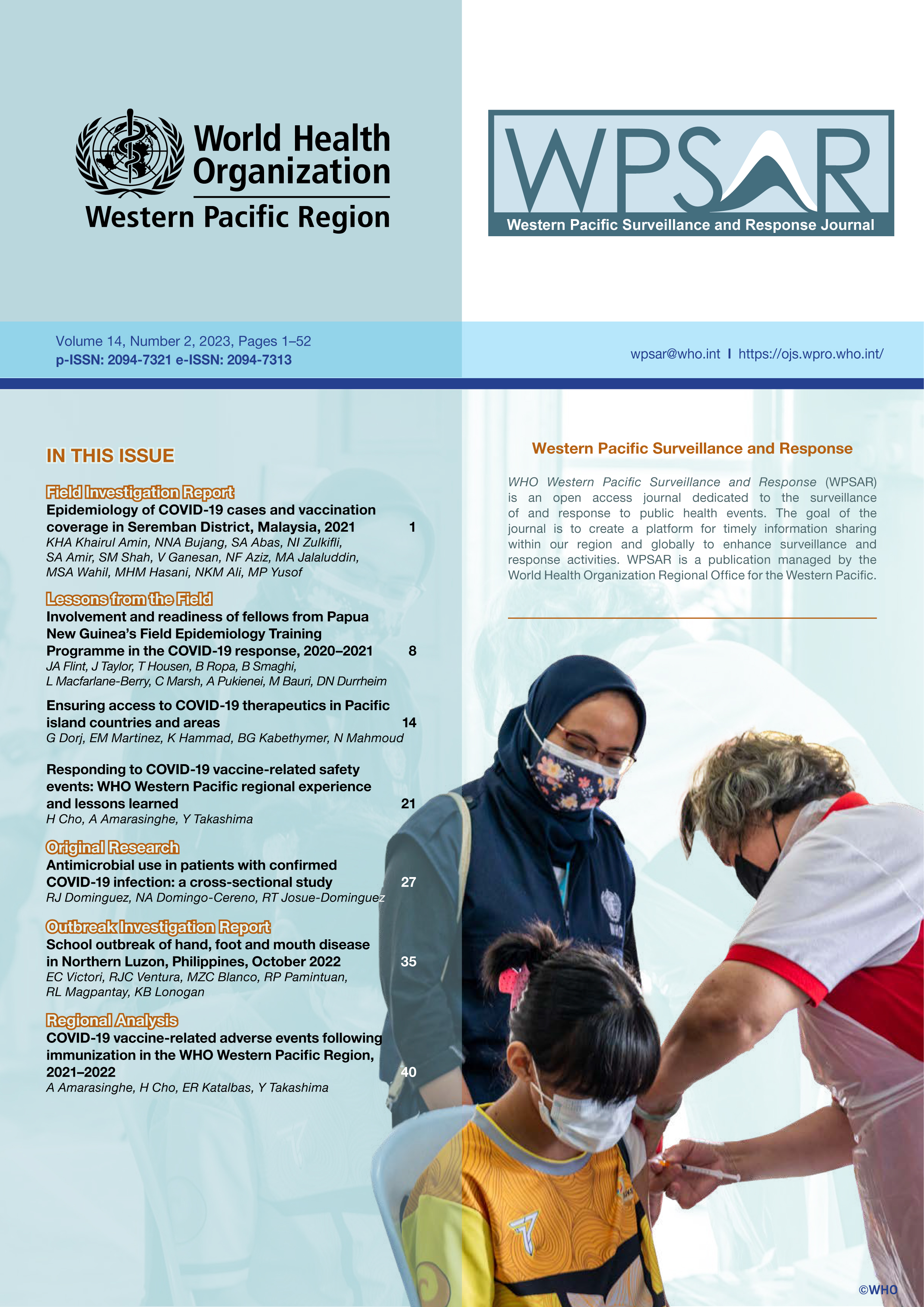Antimicrobial use in patients with confirmed COVID-19 infection: a cross-sectional study
DOI:
https://doi.org/10.5365/wpsar.2023.14.2.999Keywords:
COVID-19 virus infection, antimicrobial stewardship, cross-sectional studies, coinfection, antibiotic resistance, PhilippinesAbstract
Objective: The ongoing coronavirus disease (COVID-19) pandemic is exacerbating optimal antibiotic stewardship and the promotion of bacterial resistance due to the over-prescribing of antibiotics for patients with COVID-19. This study aimed to determine the prevalence of antibiotic therapy in patients with COVID-19 infection and explore the association of antibiotic prescribing with patients’ demographics and clinical characteristics.
Methods: A retrospective analytical cross-sectional study was conducted at a tertiary hospital and training institution in Baguio City, the Philippines from March 2020 to March 2021. Univariate and multivariable logistic regression was used to compare COVID-19 patients who were prescribed antibiotics with those who were not.
Results: Of the 157 patients hospitalized with COVID-19 infection, 90 (57.3%) received antibiotics, with only three (1.9%) having confirmed bacterial coinfection. Among those prescribed antibiotics, azithromycin was the most frequently prescribed antibiotic (43.3%), followed by ceftriaxone (33.1%), piperacillin-tazobactam (15.3%), ceftazidime (5.1%), moxifloxacin (1.3%), amikacin (0.6%), ampicillin and sulbactam (0.6%), cefuroxime (0.6%), metronidazole (0.6%) and penicillin (0.6%). Antibiotic use was associated with factors such as having bilateral infiltrates on chest X-ray, the severity of COVID-19 infection and high white blood cell counts.
Discussion: Antibiotic use was high among patients with confirmed COVID-19 despite a low prevalence of confirmed bacterial coinfection. This may be due to the similarities in the clinical manifestations of both viral and bacterial infections. Judicious use of antibiotics in the treatment of COVID-19, as well as other viral infections (for example, influenza), is required to prevent antibiotic resistance in accordance with the principles of antimicrobial stewardship.

